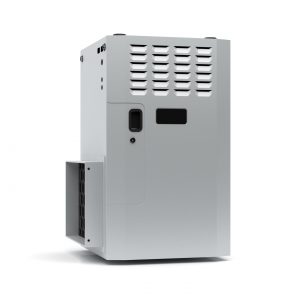 You’d be surprised by how many homeowners there are that don’t really know how their furnaces work. While it might be convenient to think of your heater like a magic box that makes heat, it’s more complicated and more interesting than that. Gas furnaces are marvels of modern technology, being able to burn fuel using combustion to turn cold air into warm air, they’re hyper-efficient these days and tend to run very affordably as well.
You’d be surprised by how many homeowners there are that don’t really know how their furnaces work. While it might be convenient to think of your heater like a magic box that makes heat, it’s more complicated and more interesting than that. Gas furnaces are marvels of modern technology, being able to burn fuel using combustion to turn cold air into warm air, they’re hyper-efficient these days and tend to run very affordably as well.
That being said, when something goes wrong in your furnace or you’re worried about your home’s safety having a gas burner inside of it, it’s always a good idea to have a good idea about what a furnace does and how it works. So, when you need furnace repair in Wabash, IN, you’ll be able to help a professional pinpoint exactly where the issue is and know how relatively expensive that fix should be.
How It Works
We mentioned briefly before that a furnace works via combustion, but that’s not really a good enough answer when you’re trying to get a detailed look at the inside process of your system. To get a little deeper, we have to look at how the interior components interact.
- Cool air is blown through the return register through your ducts into your furnace. This air is filtered and blown through the heat exchanger of your furnace.
- At the same time, gas is burned in the combustion chamber where the burners, started by a pilot light, burn the fuel to heat the chamber accordingly.
- The filtered air from before begins absorbing heat from the heat exchanger, which runs right next to the combustion chamber. This is the primary way that your air gets heated since the heat exchanger is the hottest part of your furnace.
- The exhaust fumes must be expelled through a draft hood and eventually deposited outdoors via your exhaust pipe.
- The warm air finishes heating up and is expelled through your ductwork to be felt by you and your family.
While it’s a little more intense than just saying “a box that heats my home,” it’s still not terribly complicated. The combustion process is an age-old way we’ve made heat, and it’s been reworked time and time again to use fuel more efficiently.
Important Parts to Remember
If you’re looking at furnace problems, then there are a few parts of your furnace you’re going to want to remember.
- The Heat Exchanger. This component is core to the whole heating process. Without the heat exchanger, your furnace just won’t work period. If there is even a slight crack in your heat exchanger, you might be dealing with a carbon monoxide or gas leak, which could represent a safety risk. Know that if something is wrong with your heat exchanger, it could mean replacing your furnace.
- The Pilot Light. Responsible for starting the heating process, your pilot light is an integral part of your furnace. If you notice an orange flame, a flame that flickers, or anything else strange about your pilot light—contact a professional today.
Don’t hesitate to call our team at Collier’s Heating & Air Conditioning for your furnace repair or replacement. Collier’s—A company you’ve grown to trust.
